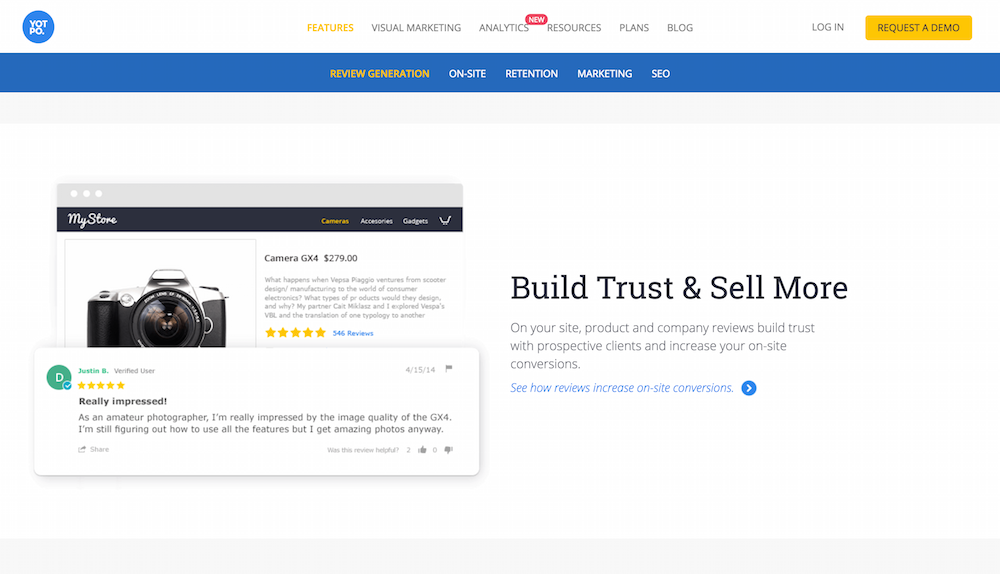
SEO is integral to building a successful online business, but not in the way you may think.
The first page of Google is still one of the most profitable places a business can be. However, it’s extremely hard to keep up with GoogleBot algorithm changes. Aside from the periodic major updates, Google reportedly changes their algorithm 500-600 times a year.
Google constantly tweaks GoogleBot — Google’s all powerful web crawler. Algorithm changes are regularly made to their spider to reflect user behavior trends. Their goal is to provide the most relevant answer to an online searcher’s questions.
So instead of trying to keep up with algorithm changes, like most traditional SEO professionals, think ahead of the curve. Focus on your users instead.
Ahead of the Google curve
I am aware that staying ahead of Google by focusing on your users is easier said than done. The biggest hurdle is the shift in your thought process as an online marketer.
First, it helps to understand two giant marketing trends and how they relate to GoogleBot.
Inbound marketing
Inbound marketing “is a strategy that utilizes many forms of pull marketing – content marketing, blogs, events, SEO, social media and more – to create brand awareness and attract new business.”

With the ubiquitous rise of smartphone usage, information travels faster than ever before. Marketers capitalize on this trend by using pull marketing tactics to inform their inbound strategy. It is driven by two types of user permissions.
Explicit permission
Default approval is required/received before you can send educational information about your business. For example, a user:
-
completes email newsletter opt-in form
-
signs up to a live webinar about your business
-
follows you on Instagram, or subscribes to your YouTube channel
Implicit permission
Implicit (implied, but not clearly expressed) permission for further communication is received when a user shows up and engages with your business as they are searching for information. For example, a user:
-
engages your customer service team via live chat or email
-
searches for a “How To” video on YouTube or Google
-
looks for an answer to their question on your Quora page
-
visits your website FAQ page to learn more about your products
Consequently, today’s successful SEO campaigns are keenly focused on creating and distributing content across multiple marketing channels, rather than a sole technical focus. So, if you want to stay ahead of the Google curve, create meaningful high-value content and distribute it.
User generated marketing
According to a Forbes, U.S. millennial consumers are expected to spend $200 billion in 2017. Attracting millennials is a high priority for many businesses given the sheer breadth of their collective buying power.
To accomplish this, marketers flock to the digital space, especially social media. Today, social media assets are extremely valuable. Hence, it’s very important to cut through the clutter on your select social channels.
Millennials also value authenticity over brand messaging, according to the Washington Times. Marketing is no longer solely about what a brand tells consumers. Instead, in our smartphone era it is about what their peers tell them.
One powerful way to leverage this trend is to empower users to do your marketing for you.
User generated content — Reviews
For example, at my online vape e-commerce startup we had issues keeping our content fresh. Fresh content is important because it influences Google rankings.
We had over 300 different products to maintain. So, instead of hiring a content writer to regularly create fresh content for product and category pages, we purchased a powerful reviews and user-generated content (UGC) marketing tool called Yotpo. Our goal was to get more ratings and reviews, boost traffic and increase sales.

This user-focused method, generated authentic user reviews on our product pages and resulted in an increase of 7% to our “Add to Cart” rate (which is very significant). Meanwhile, the new reviews gave Google a ton of fresh content to index, which helps with SEO rankings. According to Moz research, reviews contribute at least 8.4% to local search rankings.
User generated content — Social media
Another form of powerful user generated content is social media. If you offer a visually appealing product, use Instagram to highlight use scenarios. Also, #Repost and feature customer photos on your social channels when they share lifestyle or product usage shots.

Showing other real people using your products taps into the authenticity factor. It gives others a lot more confidence to try your product.
Final thoughts
Ultimately, I urge growth hackers and startup founders to take a user-focused approach to business growth. Recruit an army of loyal content-generating users. Then, produce content, distribute it and watch profitable traffic roll in.
This article has been edited.
Jeremy Ong is the founder and CEO of Vape Club International, a growth stage e-commerce startup with the vision of bringing the best Malaysian vape e-juices to the world. A digital marketer by profession, Jeremy also has programming knowledge in HTML, CSS, Ruby on Rails and iOS app development. Connect with @vapeclubmy on Twitter.
© YFS Magazine. All Rights Reserved. Copying prohibited. All material is protected by U.S. and international copyright laws. Unauthorized reproduction or distribution of this material is prohibited. Sharing of this material under Attribution-NonCommercial-NoDerivatives 4.0 International terms, listed here, is permitted.













